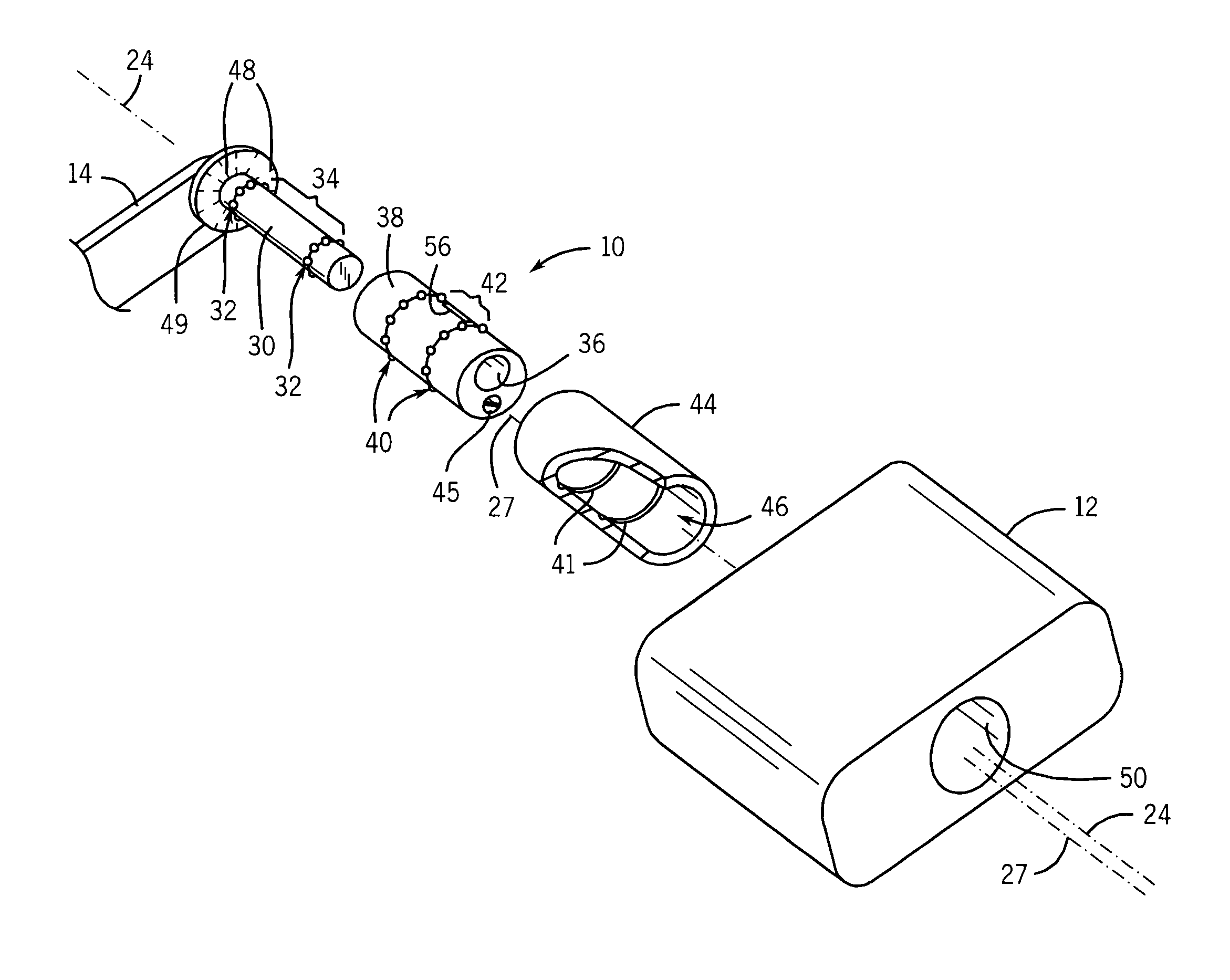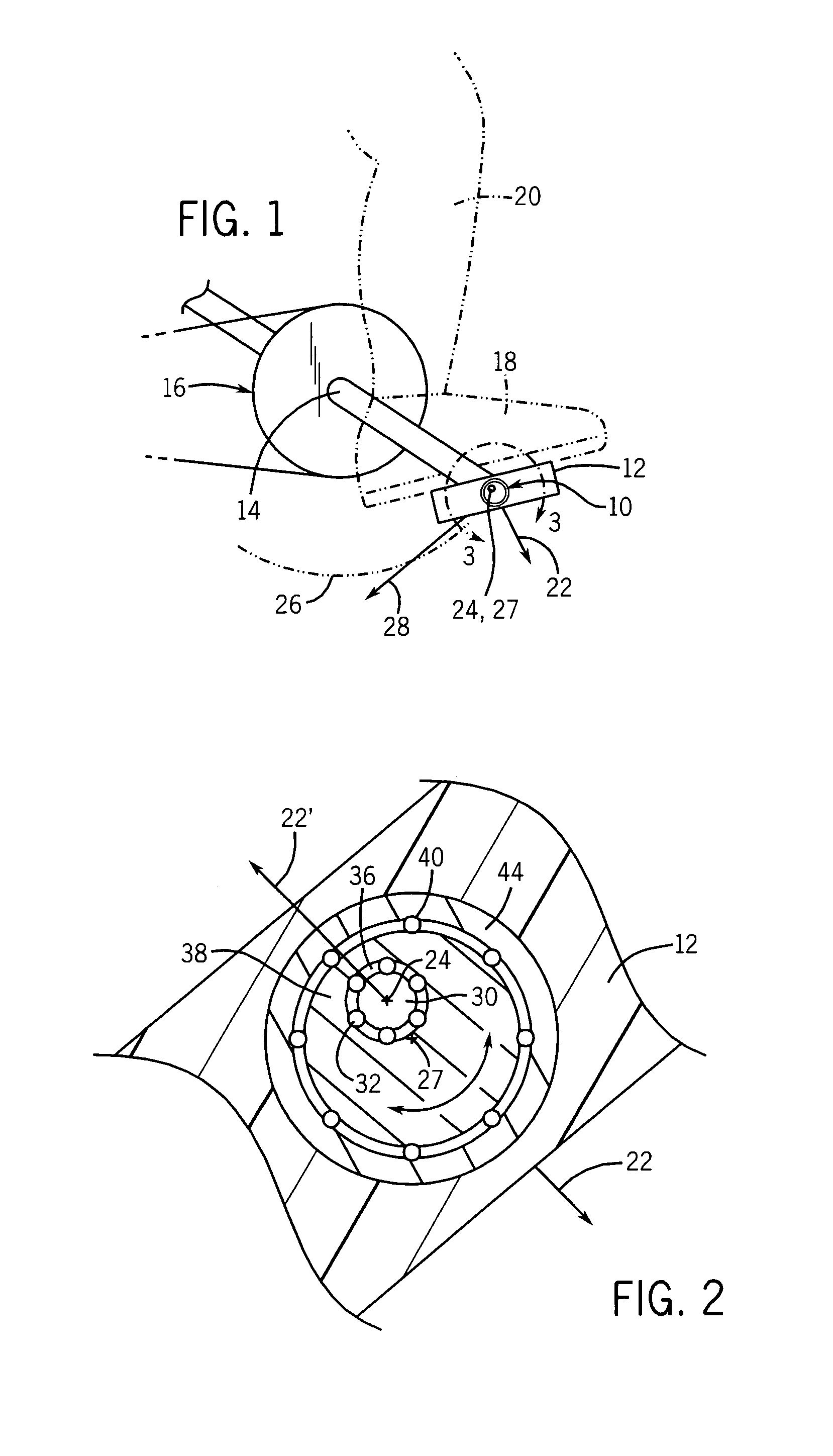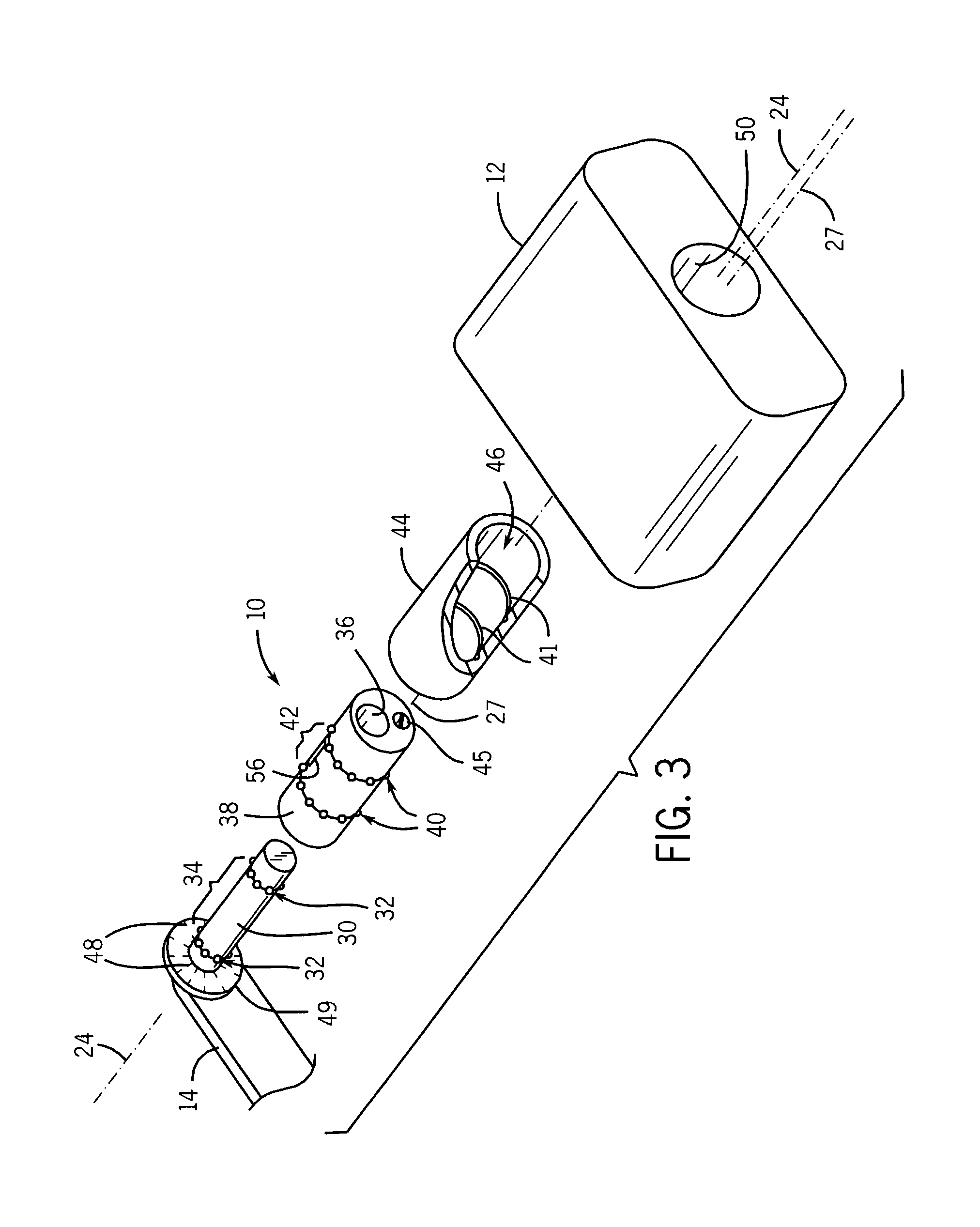Electromechanical force-magnitude, force-angle sensor
a force angle and magnetometer technology, applied in the field of force sensors, can solve the problems of single-axis sensor difficulty, force angle error, force angle extraction from multiple sensors, etc., and achieve the effect of superior user feedback
- Summary
- Abstract
- Description
- Claims
- Application Information
AI Technical Summary
Benefits of technology
Problems solved by technology
Method used
Image
Examples
Embodiment Construction
[0035]Referring now to FIG. 1, the present invention provides a force sensor 10 that, in one embodiment, may fit within a pedal 12 of a stationary bicycle or the like. As is understood in the art, the pedal 12 may be attached to a crank arm 14 of a crank assembly 16. The crank assembly 16 also provides a second pedal and crank arm (not shown) so that two pedals may be engaged by a user's feet for exercise of the legs.
[0036]Specifically, a user's foot 18 may press upon the pedal 12 to provide a force 22 shown as a vector having a force angle and first axis 24 through the pedal, and a force magnitude shown as a length of the vector. The pedal 12 is constrained to a circular rotation path 26 by the operation of the crank assembly 16 and motion of the pedal 12 normally requires a component of the force 22 to project along vector 28 tangential to rotation path 26 at the first axis 24, but generally does not require alignment of vectors of forces 22 and 28.
[0037]Referring flow to FIG. 3, ...
PUM
 Login to View More
Login to View More Abstract
Description
Claims
Application Information
 Login to View More
Login to View More - R&D
- Intellectual Property
- Life Sciences
- Materials
- Tech Scout
- Unparalleled Data Quality
- Higher Quality Content
- 60% Fewer Hallucinations
Browse by: Latest US Patents, China's latest patents, Technical Efficacy Thesaurus, Application Domain, Technology Topic, Popular Technical Reports.
© 2025 PatSnap. All rights reserved.Legal|Privacy policy|Modern Slavery Act Transparency Statement|Sitemap|About US| Contact US: help@patsnap.com



